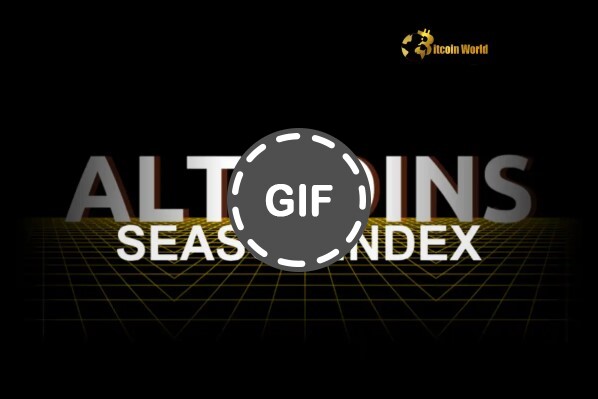BitcoinWorld

US Dollar Forecast: UBS Predicts Significant Weakness, EURUSD Targets 1.20
In the dynamic world of finance, where every shift can send ripples across markets, the performance of major fiat currencies remains a cornerstone. For cryptocurrency investors, understanding traditional market movements, especially the US Dollar forecast, is crucial. Why? Because the greenback’s strength or weakness often dictates liquidity flows, risk appetite, and ultimately, the valuation of digital assets. Recent pronouncements from financial giant UBS suggest a significant pivot in the dollar’s trajectory, potentially heralding a new era for global currency dynamics and offering intriguing implications for your crypto portfolio.
Understanding the US Dollar Forecast from UBS – A Shift in Tides?
UBS, a prominent global financial services company, has issued a notable US Dollar forecast, projecting a medium-term weakening of the currency. This outlook challenges the dollar’s recent resilience and suggests a significant shift in global economic forces. What factors are leading this influential institution to such a conclusion?
Several key drivers underpin UBS’s conviction:
- Interest Rate Differentials: As other central banks, particularly the European Central Bank (ECB), potentially catch up to the Federal Reserve in monetary tightening, the yield advantage previously enjoyed by the dollar may diminish. This convergence in interest rates reduces the attractiveness of holding dollar-denominated assets.
- Global Economic Rebalancing: A stronger, more synchronized global economic recovery outside the US could lead to capital flowing out of dollar-denominated assets into other regions. As other economies regain momentum, their currencies become more appealing, reducing the singular demand for the dollar.
- Fiscal and Trade Deficits: Persistent US budget and trade deficits could weigh on the dollar’s value over time. An increasing supply of dollars in the global economy, coupled with ongoing trade imbalances, can put downward pressure on the currency.
- Geopolitical Landscape: Shifts in global trade relations, de-dollarization efforts by some nations, and broader geopolitical stability can influence investor sentiment towards reserve currencies. Any perceived weakening of US economic or political dominance could impact the dollar’s standing.
What Drives the EURUSD Outlook to 1.20? A European Resurgence?
The core of UBS’s prediction lies in the expected appreciation of the Euro against the Dollar, with the EURUSD outlook targeting the 1.20 level. This is not merely a reflection of dollar weakness but also signals a renewed optimism for the Eurozone economy. But what specific catalysts are expected to propel the Euro higher?
The anticipated rise of EURUSD to 1.20 is underpinned by a confluence of factors:
- Eurozone Economic Recovery: Despite recent headwinds, the Eurozone economy is showing signs of resilience. A stronger recovery, driven by improved supply chains, robust domestic demand, and potentially higher investment, could boost investor confidence in the Euro.
- ECB’s Policy Stance: While the ECB has been cautious, market expectations for further tightening to combat inflation could provide significant tailwinds for the Euro. A more aggressive stance from the ECB relative to the Fed could narrow interest rate differentials, making the Euro more attractive.
- Energy Market Stabilization: Europe’s energy crisis, which significantly weighed on the Euro, has shown signs of easing. Continued stabilization and diversification of energy sources could remove a major drag on the currency, improving the Eurozone’s economic prospects.
- Capital Inflows: As global investors seek diversification and higher returns outside the US, the Eurozone could become an attractive destination, leading to increased demand for the Euro and strengthening its value.
To illustrate the conceptual trajectory of EURUSD based on UBS’s perspective, consider the following:
| Timeframe | Current EURUSD (Conceptual) | UBS Forecast (Conceptual) | Key Driver |
|---|---|---|---|
| Short-term (Current) | ~1.08 – 1.10 | Stabilizing | Interest Rate Parity, Market Sentiment |
| Medium-term (Next 6-12 months) | ~1.10 – 1.15 | Appreciation towards 1.20 | ECB Policy Shift, Eurozone Recovery |
| Long-term | Beyond 1.20 (Potential) | Sustained Strength | Global Rebalancing, Structural Factors |
Navigating Forex Market Analysis in a Volatile World – Implications for Investors
Understanding the nuances of Forex market analysis is paramount, especially when major institutions like UBS issue bold predictions. For investors, whether in traditional assets or the burgeoning cryptocurrency space, a weakening dollar and a strengthening Euro have profound implications. How might these currency shifts impact your investment decisions?
The ripple effects of such a currency shift are broad:
- For Crypto Investors: A weaker US Dollar can often be seen as a positive for cryptocurrencies. When the dollar loses value, investors may seek alternative stores of value, and digital assets like Bitcoin often benefit from this ‘safe-haven’ or ‘inflation-hedge’ narrative. Furthermore, a weaker dollar makes dollar-denominated assets (like many stablecoins and crypto prices) relatively cheaper for international buyers, potentially increasing demand.
- For Equity Markets: US multinational corporations, whose earnings are derived globally, often benefit from a weaker dollar as it makes their exports cheaper and boosts the repatriated value of foreign earnings. Conversely, companies heavily reliant on imports might face higher costs.
- For Commodities: Commodities like oil, gold, and industrial metals, which are typically priced in US Dollars, tend to become more affordable for international buyers when the dollar weakens. This can lead to increased demand and potentially higher prices for these raw materials.
- For Global Trade: A weaker dollar can make US exports more competitive on the international stage, potentially boosting the nation’s trade balance. Conversely, it makes imports more expensive for US consumers and businesses, which could impact domestic inflation.
Broader Currency Trends: Beyond EURUSD – What Else to Watch?
While the EURUSD pair often takes center stage in discussions about the dollar’s trajectory, it is crucial to consider the broader currency trends shaping the global financial landscape. The US Dollar Index (DXY), which measures the dollar against a basket of six major currencies, provides a holistic view of the dollar’s strength. What other currency pairs should investors monitor to gauge the dollar’s overall health?
Beyond the pivotal EURUSD, several other currency pairs and indicators offer valuable insights into the dollar’s weakening narrative:
- The US Dollar Index (DXY): A decline in the DXY would confirm a broader dollar weakening trend, impacting various other currencies. It offers a quick snapshot of the dollar’s overall performance against its major counterparts.
- USD/JPY: The Japanese Yen’s performance against the dollar is heavily influenced by interest rate differentials and Japan’s ultra-loose monetary policy. A significant shift here, perhaps due to a change in the Bank of Japan’s stance, could indicate broader shifts in global capital flows and carry trade dynamics.
- GBP/USD: Sterling’s strength or weakness against the dollar is often tied to the UK’s economic performance, inflation outlook, and the Bank of England’s monetary policy. A robust UK recovery and tighter monetary policy could see GBPUSD strengthen.
- Emerging Market Currencies: A weaker dollar typically provides relief for emerging market currencies, as it eases the burden of dollar-denominated debt and encourages capital inflows into these economies, fostering growth.
Monitoring these diverse indicators offers a comprehensive understanding of the dollar’s global standing and the broader implications for international finance.
Actionable Insights for Your Global Economic Outlook – Preparing for Currency Shifts
Given UBS’s compelling forecast and the potential for significant shifts in global currency dynamics, what actionable insights can investors glean to optimize their portfolios and prepare for the evolving global economic outlook? Proactive planning is key to navigating periods of currency volatility.
Here are some strategies to consider in light of a potentially weakening US Dollar:
- Diversify Your Portfolio Geographically: Consider increasing exposure to international equities, particularly in regions expected to benefit from a stronger Euro or local currency appreciation. This can help hedge against dollar weakness.
- Evaluate Commodity Exposure: Given that commodities are often dollar-denominated, a weaker dollar could be bullish for assets like gold, silver, and industrial metals. Review your allocation to these assets as a potential hedge against inflation and dollar depreciation.
- Reassess Cryptocurrency Holdings: While often uncorrelated with traditional markets, a weaker dollar can sometimes act as a tailwind for cryptocurrencies. Consider how this macro trend might influence your digital asset strategy, especially regarding stablecoin holdings versus volatile assets like Bitcoin and Ethereum.
- Hedge Currency Risk: For businesses or investors with significant international exposure, consider hedging strategies such as forward contracts or options to mitigate potential losses from adverse currency movements.
- Stay Informed: Continuously monitor central bank announcements, economic data releases, and geopolitical developments, as these are critical drivers of currency movements. Being well-informed allows for timely adjustments to your investment strategy.
UBS’s forecast of a medium-term weakening of the US Dollar, with EURUSD potentially reaching 1.20, marks a significant moment for global financial markets. This outlook is rooted in shifting interest rate differentials, global economic rebalancing, and specific Eurozone resilience. For investors, these currency trends carry substantial implications, influencing everything from equity performance and commodity prices to the attractiveness of cryptocurrencies. While no forecast is guaranteed, understanding these potential shifts allows for more informed decision-making and strategic portfolio adjustments. As the world navigates evolving economic landscapes, the dance between major currencies will undoubtedly continue to shape investment opportunities and risks alike.
To learn more about the latest Forex market trends, explore our article on key developments shaping the US Dollar and global liquidity.
This post US Dollar Forecast: UBS Predicts Significant Weakness, EURUSD Targets 1.20 first appeared on BitcoinWorld and is written by Editorial Team





